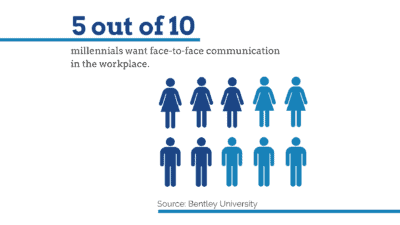The 6 Essential Steps to a Better Lead Follow-Up Process


[ Jump to the lead follow-up infographic ]
Following up with leads is a crucial step in the sales cycle for B2B companies. Whether it’s with a phone call or a follow-up email, it’s important to initiate a conversation.
Lead follow-up is a challenge for most B2B organizations. We’ve worked closely with countless sales teams on their lead follow-up process. One thing we’ve noticed is that they all tend to struggle during the earliest stages of inbound leads.
Does this sound familiar? Your marketing department receives leads and immediately pushes them to sales. The sales team then sifts through these leads, disqualifying many of them before even having a conversation or failing to disqualify obvious misfits. Marketers become frustrated that leads are being overlooked, while the lead quality reflects poorly on them in the eyes of the sales team. The marketing and sales relationship falters.
Too often when a lead comes in, the marketing department passes it off to sales without first checking to see if it’s a viable lead. This is a problem. If your sales team has to then disqualify (DQ) over half of these inbound leads, a high percentage of the sales team won’t do it and it weakens your marketing/sales relationship.
We see this all the time. Our process for a more effective lead follow-up program is simple — and it drives results. If you want to convert new leads into buyers, it’s time to master the art of lead follow-up.
What Your B2B Lead Follow-Up Process Should Look Like
1. Find Better Leads
There’s no point in wasting valuable time and resources chasing leads you don’t want. Work with your sales team to create in-depth buyer personas. This exercise will help you hone in on your target audience. You’ll be able to tailor content, offers, and messaging to the right people, so your inbound leads will align with your product or service.
2. Scrub Leads As They Come In
The second step of a good lead follow-up program is to scrub your leads. What does this mean? Do a quick search to find the contact on LinkedIn. Are they still holding the position/job title they were when the lead came in? Are they a potential fit? The key here is that if a lead is obviously and definitely not a fit, DQ it on the spot. Don’t make the mistake of sending it along to your sales team. A DQ percentage of 50-70 percent is normal, and you should factor it into your marketing cost. Of course, this depends on the campaign you’re running, the platform, and your product or service. Establish a benchmark goal and evaluate expectations over time.
3. Augment Lead Information
A proper lead follow-up includes lead augmentation. As you research and scrub leads, enhance the good ones. Add as much lead information as you reasonably can. Clearbit is a great tool for this — it automatically enriches your records. Most marketing departments fail to follow this step by simply pulling a list and flipping it to sales. The sales team then must find the lead, validate it, and test dial numbers, which reduces the amount of time they actually spend talking with prospects.
4. Verify Phone Numbers
If you augment the lead information beforehand, you have a known good list. The only thing missing is to verify the validity of the phone numbers. This step is critical for effective lead follow-up because phone conversations are crucial. According to HubSpot’s State of Inbound 2017, a mere 24 percent of sales emails are opened. Valid phone numbers save your team time and boost your likelihood of reaching your lead immensely.
5. Call Until a Conversation is Held
Bear with us, because we’re probably going to shock you. Here at DemandZEN, we’ve found that calling a lead 30-50 times is economically viable and maximizes the number of meetings you can get from your leads. Yes, it’s far greater than most people are used to doing. Most inside sales teams put 5-10 touches on a lead — and most are emails. This results in a poor connection rate. You might take 400 leads and set 4 meetings this way. If you call, you’ll likely see 40 to 80 meetings.
Before you balk at this number, think about it. People get upset if you communicate too often. We’re definitely not advocating for a string of 100 “Can I have a moment of your time?” conversations with a lead. We call only until they pick up and talk with us. From there, we follow up as needed at a time that works for the prospect.
6. Maximize Yield Using a Closed-Loop Process
The sixth key element to optimal lead follow-up is to drive a closed-loop process. This means that a lead either A) takes a meeting, B) gives an internal referral, or C) confirms that your product or service is a hard DQ. If the lead uses a competing product of yours, it means that they are a fit. It’s merely a timing issue, then. You may need to wait 3-6 months (or however long your product cycle usually lasts).
If you establish a closed-loop process where you scrub the leads and connect with everyone, the number of leads you need to generate each week are equal to the number of leads exiting your program. There’s no reason to give up on a lead unless they are no longer valid.
“Closing” Thoughts
If you want to close leads, you need to embrace an aggressively executed approach. Most lead follow-up programs are designed to give up after a few weeks. After several unanswered phone calls and emails, sales teams typically funnel their leads into a nurture campaign. This is a passive method where you’re simply hoping the lead will raise their hand down the road. The best lead follow-up plan is a bold, creative plan. If your marketing team has a clear idea of which personas make the best leads and is given the responsibility of disqualifying poor fits, this helps your sales team and strengthens the respect they have for marketing. It also gives marketers a better idea of the audience to whom they need to market. Everybody wins.
If your team could use assistance with lead follow-up, we’re here to help.
Lead Follow-Up Infographic
You Might Also Enjoy These Posts
B2B Appointment Setting Tips and Tricks that Always Work
Managing a Remote Sales Team: The Importance of Face Time
Welcome To DemandZEN
DemandZEN specializes in Account-Based Demand Generation and solving the challenges around finding, engaging and converting target accounts into real opportunities for B2B Technology and Services companies.



